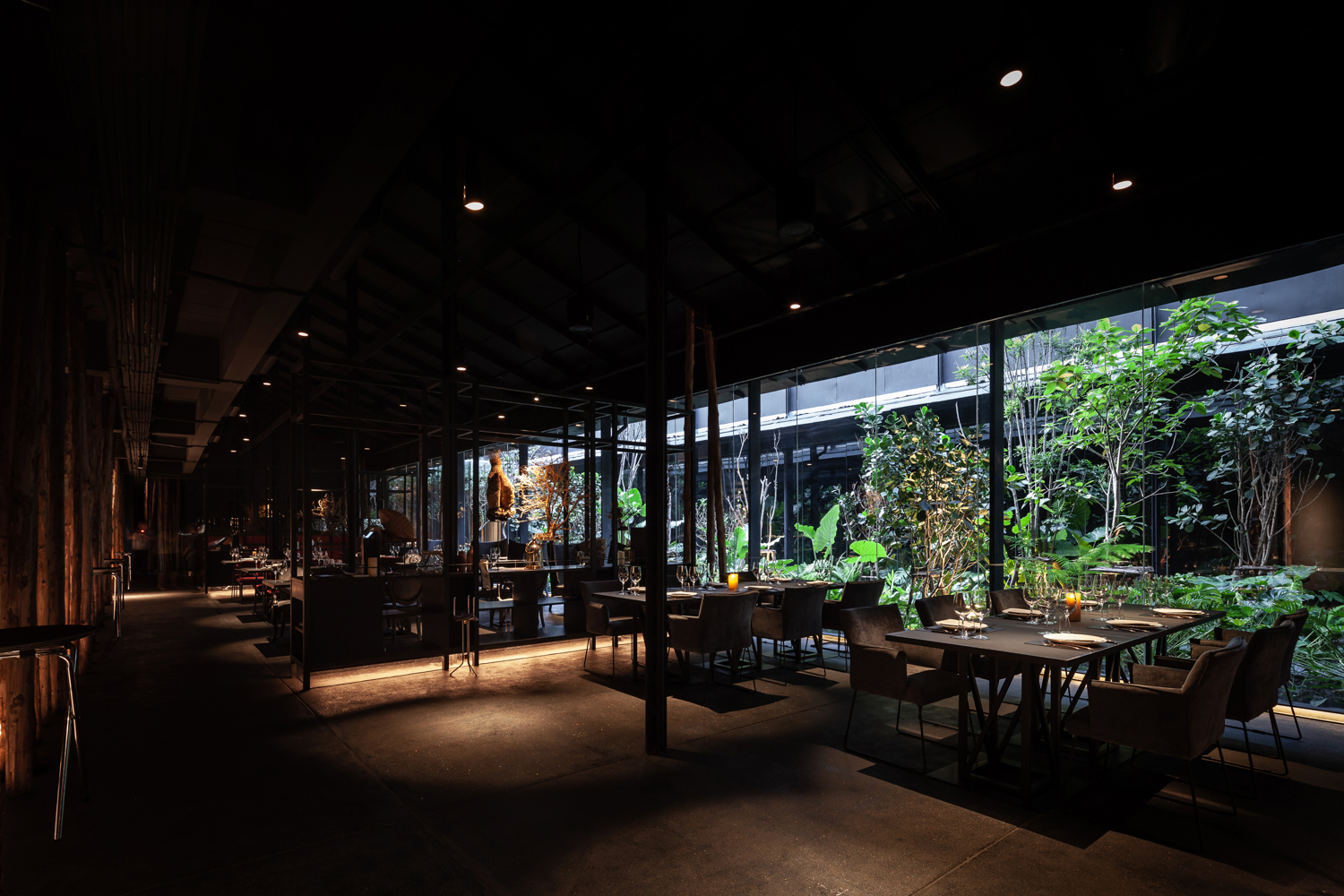BESIDES THE FIREFLY SANCTUARY, WANG HINGHOI ALSO BRINGS THE CONCEPT OF A FIREFLY’S LIFE CYCLE TO ITS DINING TABLE
TEXT: PRATARN TEERATADA
PHOTO: KETSIREE WONGWAN
(For English please scroll down )
เวลาที่หัวข้อเรื่องประสบการณ์เกี่ยวกับอาหารถูกยกขึ้นมาแลกเปลี่ยนในวงสนทนา ในหัวของเราทุกคนต่างมีเรื่องเล่าผุดขึ้นมามากมาย ตั้งแต่อาหารที่คุณย่าคุณยายทำาให้ทานในวัยเด็ก ไปจนถึงของแรกๆ ที่ลิ้นได้รับรู้รสเป็นครั้งแรก บ่อยครั้งที่การออกไปทานอาหารเป็นเหมือนกับการออกเดินทางไปผจญภัยครั้งใหม่ในชีวิต โดยเฉพาะในยุคสมัยที่นวัตกรรมของอุตสาหกรรมอาหาร ก้าวล้ำไปข้างหน้าจนเกินความหมายของ “รสชาติดี” ไปสู่ประสบการณ์ใหม่ๆ ในชีวิต ประสบการณ์ที่ว่านั้นอาจจะเป็นการได้ชิมแมลงทอดข้างถนนในกรุงเทพฯ ตับห่านปรุงรสกับไวน์ชั้นเลิศ (พร้อมด้วยประคำอธิบายขั้นตอนการเลี้ยงห่านแบบโหดๆ กว่าจะได้ตับจานนี้) หรือใบไม้รูปทรงแปลกๆ ในแอฟริกาใต้ ที่บางคนอาจขอถ่ายรูปอย่างเดียวก็พอแล้ว จานนี้ ขอผ่าน!

ที่สำคัญไปกว่า “อาหาร” เห็นจะเป็น “บรรยากาศ” จะเห็นได้ว่า fine dine restaurent มีระดับทั้งหลายในโลกล้วนให้ความสำคัญกับการสร้างอารมณ์ ความรู้สึก ควบคู่ไปกับการถ่ายทอดประสบการณ์รับประทานอาหารด้วยกันทั้งสิ้น ทั้งที่เป็นการรับประทานอาหารบนที่สูงๆ อย่าง rooftop อาคารสูง มีวิวตึกรามบ้านช่องรายรอบ บ้างก็เป็นริมน้ำ เห็นวัดวาอาราม และการสัญจรบนผิวน้ำ หรือตั้งโต๊ะกินริมถนนตามเขตเมืองเก่า ก็จะเร้าอารมณ์ไปอีกแบบเช่นกัน สรุปได้ว่าประสบการณ์ดีๆ ที่ธุรกิจ fine dine ยุคนี้แข่งกัน อยู่ที่รายละเอียดในการนำเสนอโดยเฉพาะ “exceptional atmosphere” และ “exceptional service” ซึ่งกลยุทธ์ทั้งหมดล้วนมุ่งสร้างประสบการณ์พิเศษให้กับลูกค้า ร้าน fine dine ส่วนใหญ่จะนิยมให้บริการเป็นชุดอาหารที่บังคับตามคอร์ส มากกว่าจะให้สั่งแยกตามใจชอบ ทั้งนี้เพื่อบริหารวัตถุดิบและเวลา อีกทั้งสามารถออกแบบลำดับการรับรู้ประสบการณ์ของอาหารมื้อพิเศษด้วย
“วังหิ่งห้อย” เป็นโปรเจ็คต์ fine dine ที่น่าศึกษาเป็นอย่างยิ่งความน่าสนใจของโปรเจ็คต์นี้เริ่มตั้งแต่ “ที่ตั้ง” อันเป็นสนามไดร์ฟกอล์ฟเก่าใกล้ๆ กับอาร์ซีเอ อาคารเดิมถูกดัดแปลงให้เป็นร้านอาหารพร้อมที่จอดรถกว้างขวาง ซึ่งเป็นข้อได้เปรียบของร้านอาหารกลางเมืองหลายๆ แห่ง ที่ผลักภาระให้ลูกค้าหาทางมาให้ถึงเอง (ซึ่งลูกค้าส่วนใหญ่มักจะเข้าใจและจัดการกับปัญหาเองด้วยสิ) ด้านหน้าทางเข้ามีสนามหญ้าขนาดใหญ่ปูสายตาไปถึงทางเดินเข้าที่บีบแคบลงด้วยกำแพงดินสีส้มที่มีการไล่โทนสีธรรมชาติ ตามชั้นของดินที่ใช้ระบบ pre cart มาวางต่อกัน ณ จุดนี้ ลูกค้าสามารถสัมผัสได้ถึง “exceptional atmosphere” ในทันทีที่ถูกโอบล้อมด้วยกำแพงชั้นดินสองข้างทาง ที่ปลายทางมีจุดต้อนรับโดยพนักงานที่มีสกิลการสื่อสารชั้นเยี่ยม (และแน่นอนว่าดูดีมากๆ ด้วย)
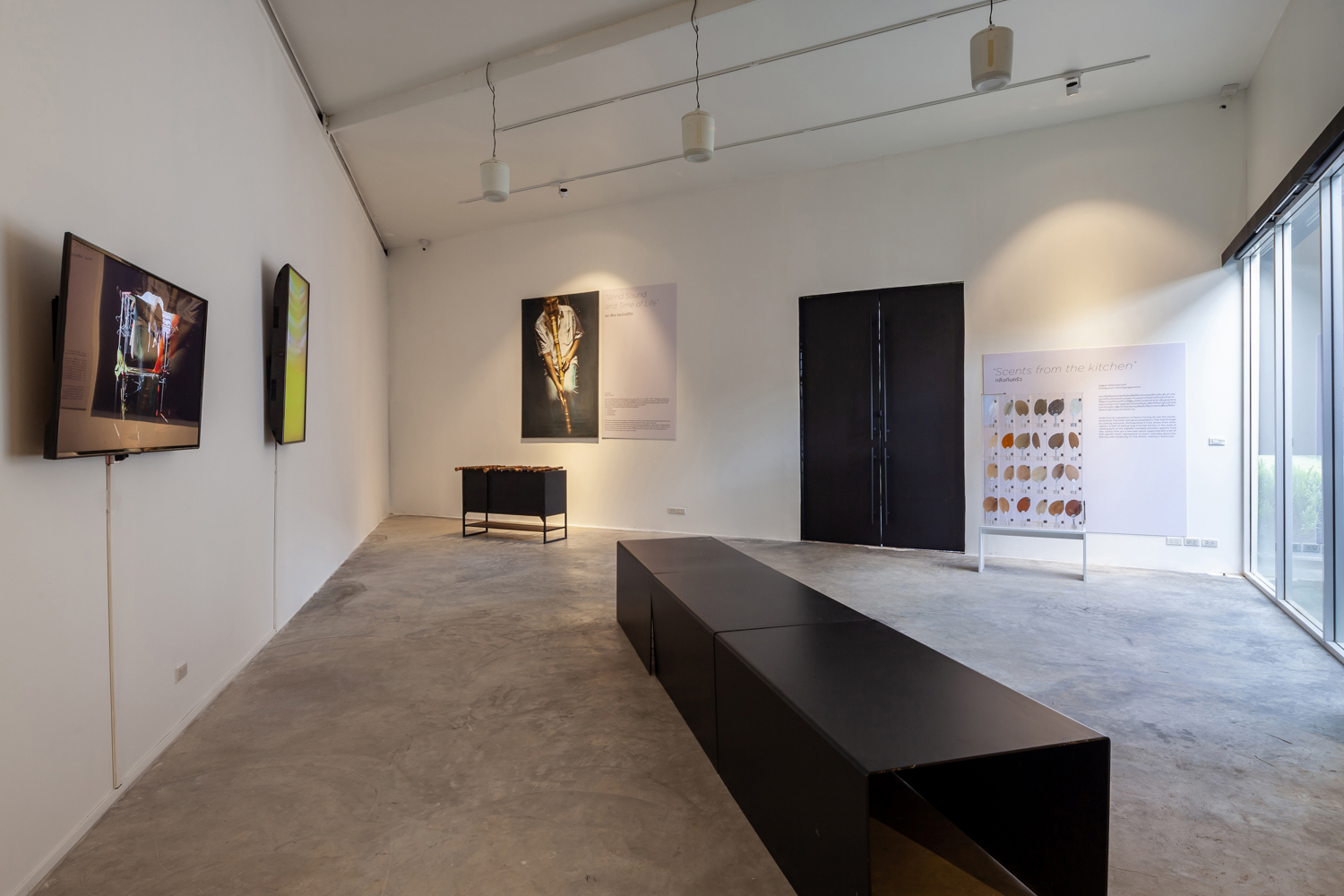
ทางด้านซ้ายเป็นพื้นที่แสดงศิลปะ ด้านขวาเป็นพื้นที่ร้านอาหาร พื้นที่ศิลปะเรียกว่า “Glow Museum” วันที่เราไปเยี่ยมเป็นนิทรรศการที่สองชื่อ “Wind & Mind” ภายใต้ธีม “ลม” ต่อจากนิทรรศการแรกในธีม “ดิน” โดยวังหิ่งห้อยจะเล่าเรื่องธาตุทั้งสี่ “ดิน น้ำ ลม ไฟ” ภายในระยะเวลา 18 เดือน ก่อนร้านจะปิดบริการสูญสลายไป (หรือย้ายไปที่อื่น) เนื่องจากพื้นที่ตรงนี้จะถูกพัฒนาเป็นโครงการใหม่ๆ ต่อไป งานก่อสร้างและ content ทั้งหมด ถูกกำหนดภายใต้ธีมรวมดังกล่าวเช่นเดียวกัน
ในฝั่งร้านอาหาร บรรยากาศทั่วไปจะถูกคุมแสงให้สลัวๆ มีสวนตรงกลาง กลิ่นหอมที่ลอยมาแตะจมูกก็อยู่ในธีม “ลม” เช่นกัน สมองเริ่มเก็บข้อมูลและค่อยๆ รับรู้ถึงประสบการณ์ใหม่ที่พร้อมจะร่วมเดินทางไปบนเส้นทางอันน่าค้นหาที่เป็นขั้วตรงข้ามกับความวุ่นวายของแสงสีเมืองหลวง และสภาพการจราจรด้านนอก ความรู้สึกที่ได้รับตรงนี้คือ “ความสงบ” เหมือนกับธรรมชาติภายในค่อยๆ ปรับสมดุลเข้าสู่ตัวตนดั้งเดิมของมนุษย์ ที่ไม่ได้ต้องการอะไรไปมากกว่าการหยุดนิ่งสักครู่ ให้สมองได้พักจากเรื่องราววุ่นวายของวันนี้ลง ลมหายใจปลอดโปร่งขึ้นสายตาค่อยๆ ปรับตัวกับสภาพแวดล้อมรอบด้าน และเริ่มมองเห็นภาพที่เคยอยู่ในความมืดชัดเจนขึ้น
Cloud Nine เป็นชุดเมนูในธีม “ลม” เชฟตีความคุณสมบัติต่างๆ ของลม ออกมาเป็นอารมณ์แผ่วเบาไล่ไปจนถึงมรสุม ในส่วนนี้การเดินทางของประสบการณ์ถูกทำให้เป็นเรื่องส่วนตัว ซึ่งการรับรู้จึงเป็นไปตามประสบการณ์ของใครของมัน ไฮไลท์ของ “วังหิ่งห้อย” จะอยู่ตรงห้องดู “หิ่งห้อย” ซึ่งค่อยๆ โผล่ออกมาจากที่ซ่อนในเวลาราวทุ่มตรง ราวกับกดปุ่ม หิ่งห้อยนับร้อยๆ ตัวจะค่อยๆ กระพริบแสง ลอยละล่องอยู่ทั่วห้องกระจก ที่ถูกสร้างระบบนิเวศตามแบบธรรมชาติ เราใช้เวลานั่งนิ่งๆ เฝ้ามองบรรดาหิ่งห้อยบินว่อนเบื้องหน้า จินตนาการไกลออกไป จนลืมไปว่านี่คือกลางเมืองกรุงเทพฯ และยังมี main course รออยู่ที่โต๊ะอาหาร
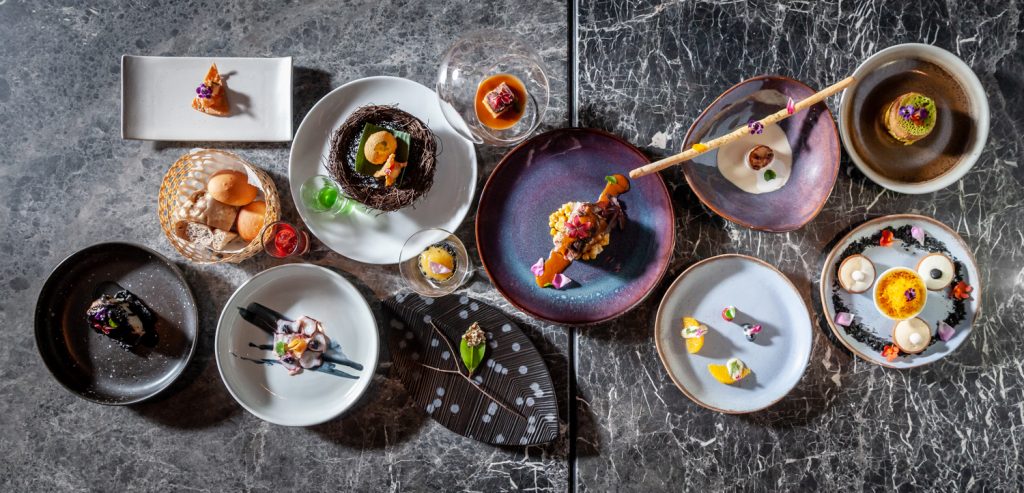
งานออกแบบสถาปัตยกรรมโดย วิทยา บุญญสิริกุล จาก BigDot Architect และงานออกแบบภูมิสถาปัตยกรรมโดย Allplants ทำหน้าที่ตอบโจทย์โปรเจ็คต์ “วังหิ่งห้อย” ในการสร้างระบบนิเวศธรรมชาติแท้ๆ ให้โผล่มาใจกลางกรุงเทพฯ ได้อย่างครบถ้วน โปรเจ็คต์นี้เป็นการทดลองที่เต็มไปด้วยความท้าทายของธุรกิจการขายประสบการณ์ “fine dine” สำหรับคนเมืองที่เก็บรายละเอียดย่อยยิบทุกเม็ด ด้วยความเข้าใจความต้องการของคนเมืองเป็นอย่างดี จนอดคิดไม่ได้ว่าเรื่องของธุรกิจกับเรื่องชีวิตเป็นเรื่องเดียวกัน มันคือความเข้าใจถึง สมดุล สัมพันธภาพของเมือง ชีวิต ธรรมชาติ และช่วงเวลาสั้นๆ ที่เรียกว่า ช่วงเวลาอัศจรรย์!

Whenever there is a conversation about eating experiences, we would think of memories ranging from that of our childhood meals to the earliest foods we had the opportunity to taste. Many times, eating outside can amount to finding new experiences, especially in an age when eating experience goes beyond tasting delicious food and into experiencing new things in life. Those experiences may be tasting deep-fried mantis in Bangkok, foie gras paired with great wine (along with a description of the brutality surrounding the process of growing it), to some strange South African leaves that would make you say “Thank you, I’ll just only take photos and pass.”
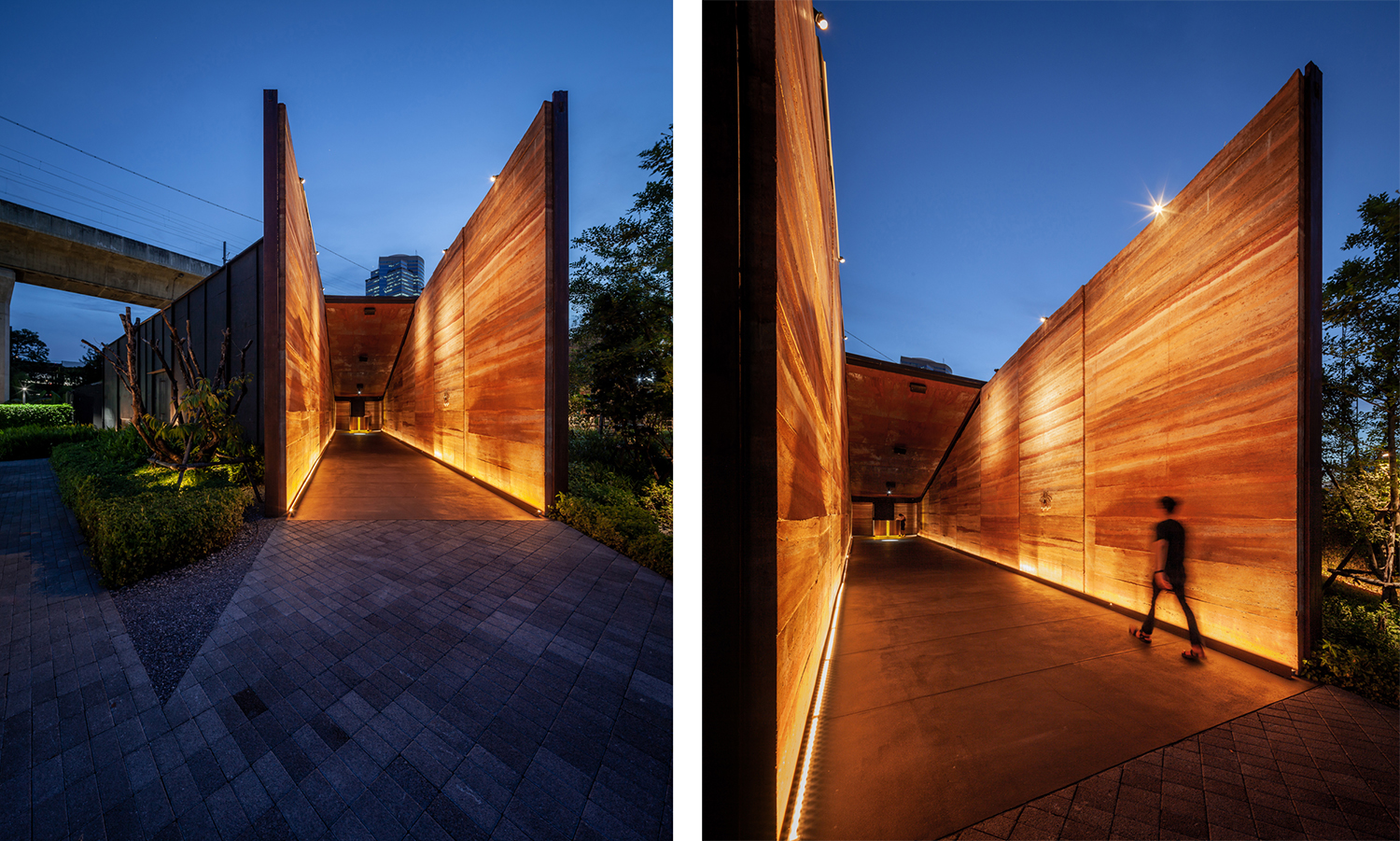
It could be said that what’s even more important than food itself is atmosphere. Each and every classy fine dining restaurant serves not only food but also atmosphere. Some are high-rise rooftop restaurants that offer panoramic views of a cityscape of houses, the riverside, temples and river traffic. Others are the street-side restaurants located along the old city’s alleys, which give off another kind of feeling. This means that the competition to sell a good experience between fine dining businesses places special emphasis on details, particularly on “exceptional atmosphere” and “exceptional service.” These strategies are all geared toward providing a customer with a special experience. Most fine dining restaurants choose to serve set course menus rather than individual plates. This not only helps them with time and ingredient management but also in designing the experience of the meal itself.

Wang Hinghoi is indeed a very interesting fine dining project. Its appeal comes, firstly, from its location which is an old driving range near RCA. The old building was transformed into a restaurant with a huge parking space. This is a huge advantage over other downtown restaurants in which the customer has to find their own means of travel to their destination (a problem which most of them understand and indeed solve by themselves). At the front entrance is a large field leading to the narrowing entrance with earth walls on either side. The walls were built of an orange-ish colored material that mimics earth’s natural shading. Here, the exceptional atmosphere instantly comes to greet the customer as he is surrounded by both earth walls. Then, he is welcomed by receptionists with great communication skills (and looks).
To the left of the complex is an art space named Glow Museum and to the right is the restaurant. On the day we visited, the wind-themed exhibition in the art space was “Wind & Mind,” a continuation of the first earth-themed exhibition. For 18 months, Wang Hinghoi will hold exhibitions centered around the four elements—earth, wind, water and fire before closing (or moving elsewhere) due to the new development projects due to take place here. All construction work and content here are also built under the same themes.
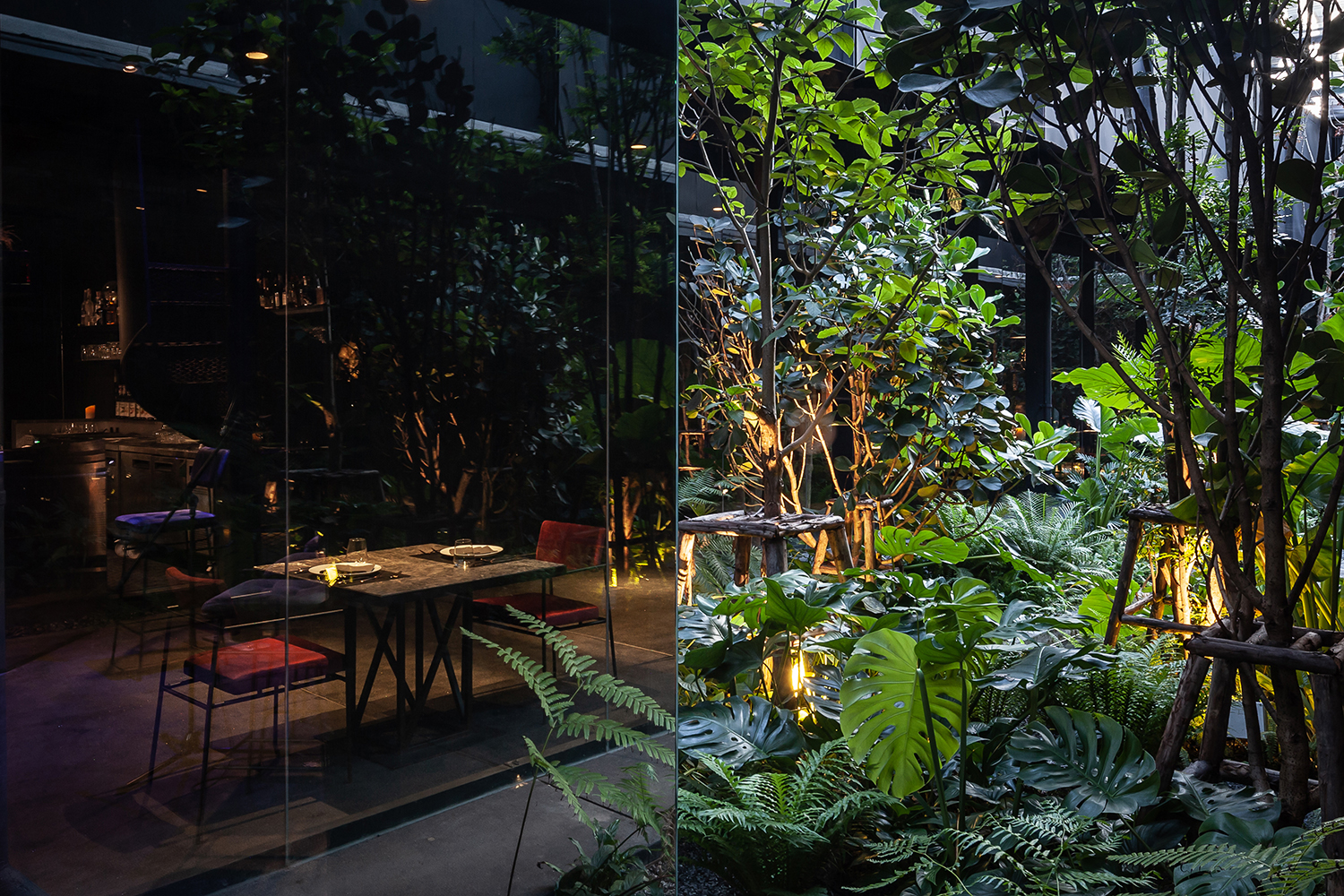
On the restaurant side, the general atmosphere is one of dimmed, controlled light and is set alongside a garden. The “wind” also makes its appearance here, in the form of the good smell that flows into one’s nose. The brain then starts to receive information and a new experience of calmness, which is a stark contrast to the downtown chaos outside the restaurant, moves in. This calmness here feels like a rebalancing of the mind, which needs nothing more than a momentary rest from our daily, chaotic lives. The breath becomes fresher. Our eyesight starts to adapt to the surrounding darkness and our vision becomes clearer.
Cloud Nine is a wind-themed set course meal featuring a menu that is an interpretation of wind according to the chef. The feelings of the dishes, therefore, range from light to stormy, just as wind does. From here on, each individual experience becomes personal, in accordance with one’s senses. The highlight of Wang Hinghoi is a room in which the customer can watch hundreds of hinghoi (fireflies) slowly emerging from their hides as if on cue. In this moment, hundreds of fireflies flash their lights and fly freely all over the glass room, which was built in accordance with the natural ecosystem. We just sat there, gazing, letting our thoughts fly so far away that we momentarily forget we’re still here, in downtown Bangkok. And of course, there’s still our main dish awaiting us on the dining table.

This architecture designed by Wittaya Bunyasirikul of BigDot Architect and landscape designed by Allplants perfectly answers to the needs of the Wang Hinghoi project in building a real natural ecosystem amid urban downtown Bangkok. This fine dining project is indeed challenging due to the expectations of the customers who pay attention to every detail. The project, however, nailed the task because of their understanding of the customers’ needs. This makes us think that life and business are one and the same thing: an understanding of balance, relationships, life, nature, and a short moment called a wonderful moment


